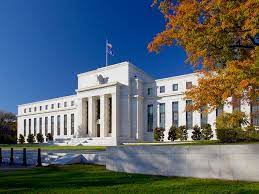Strategy
US Unemployment Data Suggests Fed Will Pause Hikes ‚Äď Reactions

After the US Bureau of Labor Statistics released the latest unemployment data on Friday, investment managers discuss what this means for investors, the economy, as well as a potential interest rate hike.
New data from the US Bureau of Labor Statistics shows that the US unemployment rate rose unexpectedly in August at 3.8 per cent, compared with predictions of a 3.5 per cent increase. The figures may suggest that the US Federal Reserve will be less likely to tighten monetary policy when it meets on September 20.
The data also shows that US non-farm payrolls (NFPs) gained 187,000 in August, compared with an expected 170,000, showing a further sign of a slowdown in the world’s biggest economy. Average hourly earnings also rose 0.2 per cent in the month, compared with predications of 0.3 per cent, and against 0.4 per cent in July.
Here are some reactions to the rise from investment managers.
Candice Tse, global head of strategic advisory solutions,
Goldman Sachs Asset Management
“Above consensus job creation and slightly higher unemployment
shows that the labor market rebalance continues. Broadly, the
job market continues to show signs of moderation as the
broader economy moves toward a soft landing, reinforcing
market expectations that the Fed will keep interest rates steady
at the September meeting. With US economic data remaining strong
and the Fed providing greater clarity on the policy path forward,
investors may find opportunities to generate alpha in both
equities and fixed income.
‚ÄúIn equities, high index concentration and optimism about AI have benefited a handful of large-cap stocks, but investors may find broader investment opportunities as markets have become increasingly micro-driven. In fixed income, investors can benefit from attractive yields, still-robust fundamentals, and improved hedging capabilities by maintaining strategic allocations in rates and credit.‚ÄĚ
Robert Alster, CIO, Close Brothers Asset
Management
“Recent trends across labor market data have shown signs of
softening. Job Opening and Labor Turnover Survey (JOLTs) data
earlier this week showed that fewer Americans are leaving their
jobs, indicating a drop in confidence in the labor market, with
job openings falling below nine million for the first time in
more than two years. We now see unemployment figures
continue to gradually tick down in today’s non-farm payroll
report, supporting the ongoing narrative of a solid but generally
slowing labor market.
‚ÄúMarkets were left disappointed following a lack of clear guidance from Fed Chief Powell‚Äôs speech at Jackson Hole, instead relying on recent economic data points to predict how monetary policy may respond. There are still lingering concerns as to whether the Fed will continue tightening, particularly when we‚Äôve seen relatively robust evidence of rising wages in recent months, which could add to the risk of reaccelerating inflation. Consumers are still spending, despite interest rates and mortgage rates the highest in over two decades. However, markets are pricing in a 90 per cent chance that the Fed won‚Äôt hike rates at its next meeting, as it looks to achieve its desired ‚Äėsoft landing‚Äô.‚ÄĚ
Matt Peron, director of research and global head of
solutions, Janus Henderson
“The jobs report continued a trend of market-friendly (and
Federal Reserve-friendly) economic data. While the headline was a
touch stronger than expected, the details underneath, most
notably hourly earnings, were more in line with the softer
inflation trend we have been seeing these past few weeks. This
should likely keep the Fed in a holding pattern and is supportive
of risk assets.‚ÄĚ
David Goebel CFA, associate director of investment
strategy at wealth manager Evelyn Partners
“This employment update will be welcome news to the Federal
Reserve, because a more orderly employment market reduces the
risk of inflation becoming more embedded through a wage-price
spiral. At the Jackson Hole Symposium, Fed Chair
Jerome Powell said "evidence that the tightness in the labor
market is no longer easing could also call for a monetary policy
response." The chances of a further increase in interest
rates by the Fed had been hanging in the balance, but today's
figure has put downward pressure on that, which should prove
supportive to both equities and bonds. With the hiking cycle
coming to an end, markets’ focus is turning instead to how long
rates will remain at an elevated level before we see any cuts.
Futures markets currently suggest this could be as soon as
May 2024.‚ÄĚ
Ryan Brandham, head of global capital markets, North
America, Validus Risk Management
“US non-farm payrolls came in slightly stronger than
expectations, at 187,000 vs 170,000 expected, while US
unemployment ‚Äď a more noteworthy release, and watched closely by
the Fed ‚Äď was higher than expected, at 3.8 per cent vs 3.5 per
cent expected. If unemployment begins to rise, this could help
bring inflation down to 2 per cent and would build a case for the
Fed to hold off on further rate hikes. More data is still to come
before the September Fed meeting, which will help to paint the
overall picture.
‚ÄúUS GDP also came in weaker than expected at 2.1 per cent vs expected 2.4 per cent. This is a soft number, and perhaps the surprisingly resilient US economy is finally showing signs of slowing after a long rate hiking cycle. This weak figure will support those calling for a Fed pause in September, with more data yet to come before the meeting.‚ÄĚ